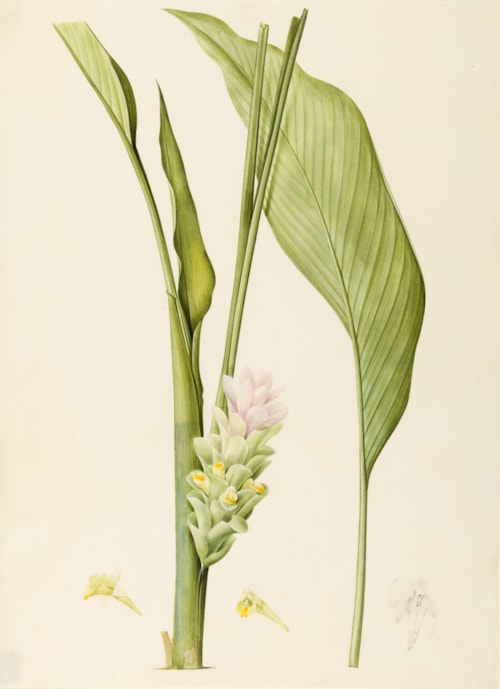
Pierre Joseph REDOUTÉ
Saint-Hubert 1759 - Paris 1840
Biography
Known in his day as ‘the Raphael of flowers’, the Belgian artist Pierre-Joseph Redouté was among the finest botanical painters of the 18th and 19th centuries, and arguably remains the most famous to this day. Born in Saint-Hubert in the Ardennes, Redouté arrived in Paris in 1782 and, at the age of twenty-three, was employed and mentored by the wealthy magistrate and botanist Charles Louis L’Héritier de Brutelle. L’Héritier gave the young artist instruction in botany and plant dissection, allowed him access to his extensive library of books and specimens, and commissioned many illustrations from him. In 1787 Redouté accompanied L’Héritier on a trip to England, where they visited the Royal Botanic Gardens at Kew and the artist learned the technique of stipple engraving from Francesco Bartolozzi.
On his return to Paris Redouté soon earned a reputation as a botanical illustrator. His work for L’Héritier brought him to the attention of the flower painter Gérard van Spaendonck, who was in charge of the vélins du roi, a series of several thousand natural history drawings on vellum begun in the 17th century by Louis XIII's brother Gaston, Duc d'Orléans, and continued into the 19th century. Van Spaendonck commissioned Redouté to make several hundred flower drawings for the vélins du roi (by then called the vélins du Muséum d’Histoire naturelle) and was also a particular influence on the younger artist’s manner of achieving luminous effects in painting with watercolour on vellum. Redouté was also active as a drawing teacher, and counted many members of the Parisian upper classes and nobility among his clients and patrons. He was appointed draughtsman to Queen Marie-Antoinette, and is said to have even visited her in prison during the Revolution. Despite his many connections with the aristocracy, however, Redouté’s stature does not seem to have been adversely affected by the events of the Revolution.
After the Revolution, Redouté’s role of official artist was transferred to the Muséum National d’Histoire Naturelle at the Jardin Botanique, where he continued to work. He enjoyed the particular patronage of Napoleon’s wife Joséphine, who began employing the artist in 1798 (eventually paying him a salary of up to 18,000 francs a year) and for whom he produced some of his finest work. Joséphine loved flowers and gardens, and commissioned the artist to record her collection of plants at her estate at Malmaison, a few miles west of Paris. Redouté drew 120 illustrations for Etienne Pierre Ventenant’s Jardin de la Malmaison, published between 1803 and 1805, and fifty-two plates for the Description des plantes rares cultivées à Malmaison et à Navarre by Aimé Bonpland, which appeared in 1813.
Redouté’s largest and most ambitious work, however, is his Les Liliaceés, a compendium of illustrations of the different members of the lily family which was published by the artist, in an edition of only two hundred copies, between 1802 and 1816. This lavish production was followed by the equally extravagant Les Roses, comprising 170 plates, which appeared between 1817 and 1824, and is perhaps the artist’s best-known work. Long after Joséphine’s death in 1814, Redouté continued to produce elaborate and beautiful watercolour drawings of flowers for sale to collectors. Although he enjoyed the patronage of the 19th century Bourbon monarchy, in later years he often found himself in financial difficulties. In 1822, following the death of Van Spaendonck, Redouté was appointed maître de dessin at the Muséum National d’Histoire Naturelle, and three years later was admitted into the Légion d’Honneur.


